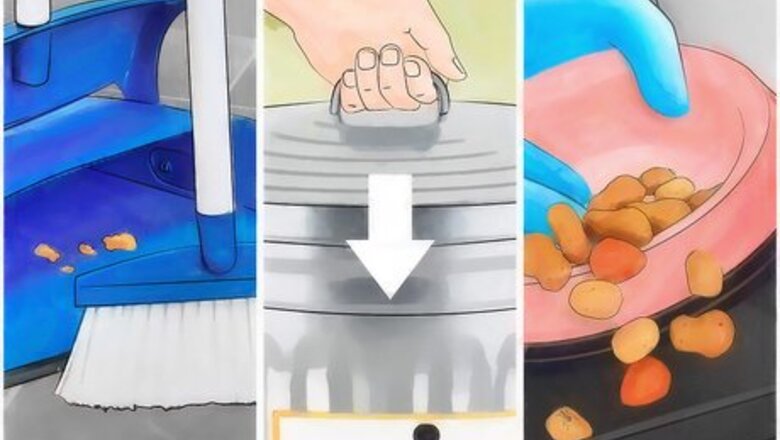
views
Keeping Fisher Cats Away
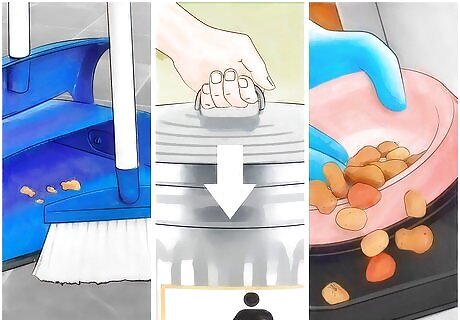
Remove any food sources. One of the best approaches to keeping fisher cats at bay is to remove food that will draw them to your property. Fisher cats are predators that will be drawn by food sources if you leave them in your yard. Fisher cats will eat berries and fruit when it’s available, but they also like to eat dead fish. They are carnivores for the most part, though, and feast on rabbits, squirrels, raccoons, mice, reptiles, insects, and dead and decaying animal flesh. This means you should get rid of rats and mice infestations before fisher cats come running to target them. Seal all garbage cans, and don’t put food out for animals. Don’t leave out cat food, for example. Although they favor meat, fisher cats might still be attracted to wild bird feeders, seed beneath the feeders, or water sources in your yard.

Protect your pets. Fisher cats are vicious predators, so don't assume that small pets will be any match for them. Protect them to ensure they are safe. Fisher cats have been known to stalk and kill house pets. Occasionally, fisher cats go after and kill house cats, so if you’re having a fisher cat problem, keep the house cat inside, as well as any small dogs. Larger dogs may actually keep fisher cats at bay. If you're not sure, it's best to keep your pets inside the home until the fisher cat problem is solved. There have been accounts of fisher cats attacking human children, but this is rare, as they usually go after very small mammals.
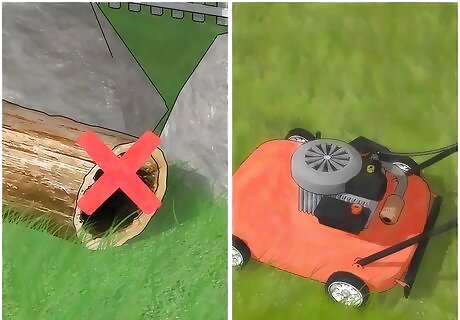
Remove decaying organic materials from your yard. Fisher cats like to find places to nest. Thus, they might be drawn to your lawn if it has a lot of decaying, organic material around it. Get rid of the organic materials, and they will make a den somewhere else. That means things like logs, stumps and brush. Getting rid of such items and clearing the lawn will keep the fisher cat more at bay. Trim brushes and trees. Mow the lawn regularly so that they have fewer hiding places. Locate your coop away from woodlands. If your chicken coop is situated right next to the fisher cats’ natural habitat, they will find it more easily. Woodlands contain many predators that will target chickens, not just fisher cats.

Buy a guard dog or rooster. One way to protect your yard from fisher cats is to have a large guard dog to keep them at bay. Some larger dogs will scare off fisher cats, although make sure to get the right breed because fisher cats prey on smaller pets. A large farm dog will spot many predators, bark, and chase them off. Make sure, though, that you don’t choose a dog that itself might attack the chickens instead of guarding them (terriers and greyhounds). Good choices for guard dogs for chickens are Old English Sheepdogs, Bernese Mountain Dogs and Great Pyrenees. Roosters are also aggressive and provide some protection. They will sound alarm calls, and will even sacrifice their own lives for a flock of laying hens. They won’t be a match for a fisher cat, but they do help sound alarm.
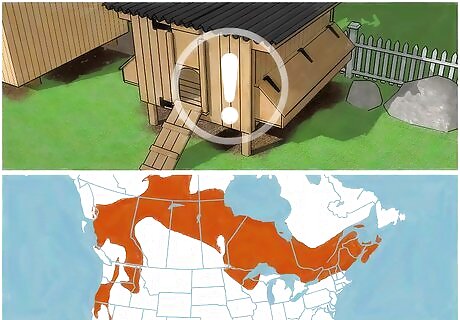
Recognize a fisher cat’s attack. Fisher cats are not pleasant creatures. They are vicious predators. Chicken owners especially need to be very vigilant about fisher cats because chickens are probably the fisher cat's favorite food. They will often raid chicken coops and are capable of killing many chickens at once. They might try to drag them away. The neck and head will be gone, and the breast might be open too. They might reach through a fence, if they can, to grab a chicken. There are many predators that can kill chickens. Determine whether you live in an area where fisher cats exist before taking steps to prevent them. The habitat of fisher cats is in North America, especially on the East Coast. You won’t find them on other continents. They usually operate within 10 square mile areas for females and 30 for males. They are found in the United States as well as in Canada. The males will usually move through their chosen area about once every two weeks. They usually go in a straight line when traveling.
Protecting Your Chicken Coop

Elevate the chicken coop. It’s a bad idea to have a chicken coop that sits directly on the ground. This will provide easier access for predators like fisher cats, who are very sneaky. Having your chicken coop sit directly on the ground will also result in poor air circulation and rot. Instead, raise the chicken coop up about 1 foot or more off the ground. This should make it harder for small predators to get into the coop. The other advantage of the elevated coop is that it can provide protection from hawks for free-ranging chickens. Remember that the fisher cat can climb, though, so, although the elevated coop will make it harder for the fisher cat to access the coop, you will still need to make sure there are no openings or rotting wood for the fisher to exploit.
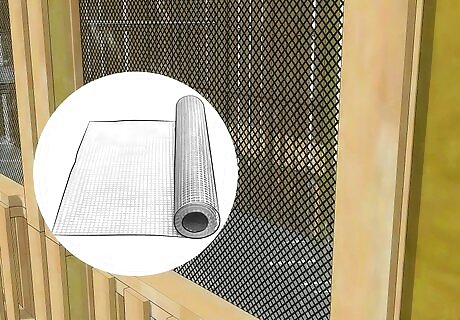
Put hardware cloth over openings. Don’t think chicken or poultry wire will protect chickens from fisher cats and other predators. It won’t. Fisher cats can tear through regular chicken wire pretty easily, but they won't be able to get through hardware cloth. Choose hardware cloth with small mesh of 1/2 or 1/4 an inch. Use similar hardware cloth to protect rabbit hutches. Fisher cats easily rip through regular chicken wire. Hardware cloth, which is available at many hardware stores, is really welded wire. Dig a trench around the entire coop to bury the hardware cloth. The small openings in hardware cloth made it hard for a fisher cat to get through it. It’s very durable and won’t tear easily, and it can be placed over any opening a fisher cat could exploit. Put the hardware cloth over windows, vents, and use it to make a chicken run that is safe from fisher cats. Create a skirt of hardware cloth around the run. Make sure to dig down at least 6 inches when erecting it. Line the bottom of the run with the hardware cloth, so fisher cats can’t dig underneath.

Cover your coop’s windows. Cover any and all openings that a fisher cat could possibly sneak through to get inside a chicken coop. Fisher cats are able to get through very small spaces due to their size and dexterity. This means you should fit hardware cloth over windows in your chicken coops as well as over any ventilation holes. Study the area and cover any opening, even if it looks very small. Don’t make the mistake of thinking that fisher cats can’t get into a hole that’s high up. They are able to climb, and thus they are very good at climbing and wriggling through small openings that are positioned high up. Make sure the top of the run is also covered. This is also important to keep away predators, like hawks, that might swoop into the coop to grab a chicken. It will also protect the chickens from fisher cats.

Build a roof on the coop. The chicken coop must also have a roof in order to protect it from predators, including fisher cats, who can get on top of it due to their climbing abilities. You must protect all areas of the coop. You could use a traditional roof made out of tar or shingles or a metal roof. Some people use hardware cloth as a roof in case the fisher cat climbs up. Adding electrified netting can provide extra protection for your chickens, deterring even the hardiest and sneakiest fisher cats. It's more expensive, but the best protection. Ensure that the chicken coop doesn’t have any openings, however small, or weakened areas because fisher cats will seize these openings to wriggle through. Fisher cats can get through openings as small as 1 inch in diameter.

Make sure chicken coop latches are secure. Predators are sometimes sneaky enough that they can lift up simple latches, so you need to secure the coop with latches that only humans can manipulate. A hook through an eye bolt is probably not a secure enough latch to protect a chicken coop from fisher cats. Instead, choose a door latch system that contains a carabiner that is threaded through the latch hole. Choose a latch system that requires two hands to open. Consider adding automatic coop doors. Automatic doors shut and lock the chickens inside the coop, often by using a timer system. Some automatic doors use light sensors or solar options if you don’t have electricity nearby. Automatic chicken doors should run you about $200, but they can be worth it because it’s very traumatic to lose chickens to fisher cats.
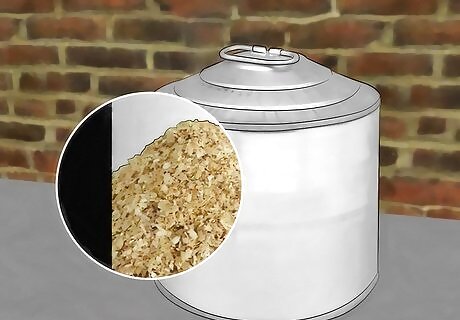
Keep chicken feed in sealed containers. Preferably, use metal containers because other predators, like rats and mice, will chew through plastic containers easily. Fisher cats will come around any place with a lot of mice or rats. If you leave feed around, you will attract more fisher cats, but also other predators and pests. Don't leave anything in your lawn that will be a draw for hungry creatures. You’re going to draw mice and rats, and that will draw fisher cats who feed on them. Mice are one of the fisher cat's favorite foods. Mice and rats are also unpleasant creatures to have around your yard on their own. Hang your chicken feeders outside the coop to also prevent mice and rats from getting into the feed meant for the chickens.
Eliminating Fisher Cats

Buy devices for deterring predators. There are certain chemicals and man-made devices that are advertised for their abilities to keep predators away. They can help you ward off fisher cats. One option is to purchase predator urine. For example, coyotes, wolves, eagles, owls, bobcats, and mountain lions secrete smells that might scare a fisher cat off. You can purchase the urine of stronger predators than the fisher cat online or in many hunting or outdoors stores. You can usually buy a bottle of it for under $20. Sometimes it comes in scent tags. Apply the predator urine near your chicken coop to help keep the fisher cat and other nuisances away. They will smell the urine, fear there is a stronger predator in the area, and leave. Create a perimeter with the scent tags or bottled scent. A similar device you can buy online and in some stores is a night guard black box with a solar panel at the top. It flashes a single blinking red light which is designed to simulate a red predator eye and you should hang it above the coop door.

Spot the culprit. What exactly is a fisher cat, and how does it differ from, say, a house cat or a raccoon? They are relatives of the marten. They aren’t really cats at all. Fisher cats are also called pecan cats or black cats. They are large, dark colored, and furry. Technically, they belong to the weasel family. The adult males weigh 7 to 12 pounds. They can grow to 40 inches long. Their tails are very long and distinctive, stretching out 13 to 15 inches. Fisher cats have short legs. Their ears are small, and their tails are furry. Some are dark brown, but others are black. One way to recognize them is through their long fur. Fisher cats have large feet with five sharp toes. They use these toes to climb tries, kill prey, or navigate across snow. They make frightening screaming sounds that people sometimes mistake for human beings being harmed.

Check with local laws before shooting or trapping a fisher cat. These actions may be outlawed in some states, and you don't want to do anything that's not allowed. Laws will vary from state-to-state. Consider contacting a pest management professional. Such professionals are trained in how to find and get rid of the fisher cats before they do greater damage. These are nasty, vicious little creatures, and it can be dangerous to try to trap a fisher cat on your own if you don't know what you are doing, especially when it comes to removing it. Contact your local government or wildlife conservation office. They will be familiar with all of the rules and regulations specific to your area.

Trap a fisher cat. Fisher cats are smart and they will learn from failed attempts. They have more escape routes to avoid traps because they can climb trees, which is part of what makes them so dangerous. As a trap location, set your trap outside a hollow tree, crevice or bush where they den. Or set it along their trails. Fisher cats require a cage trap that is 32 X 10 X 12.75 (in inches) with a door size that is 10 X 12. When using a coil spring, they require a 4 ½-inch door. When using a body grip trap, they need to be 4 ¼ by 7 inches (17.8 cm) in width and length, and 4 ¼ by 7 ¼. Use cage and foothold traps along their trails. In the winter, they are more likely to be in trees, so use a leaning pole set. Body grip traps have rotating jaws that capture the animals. Foothold traps capture them and hold them alive.
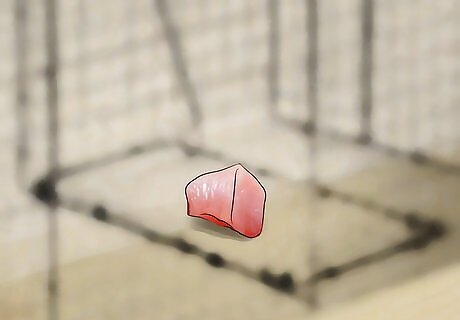
Pick the right bait. When trapping the fisher cat, it’s important to remember they like meat. Thus, trapping the fisher cat can be a rather unpleasant process because of the bait you need to use. A skinned but whole beaver carcass is good bait. Other meat – rabbits, mice and squirrels - can also work as bait to draw in a fisher cat. Fishers also like skunk and fish oil, and, thus, they may be lured into a trap that has it. Live bait is also something to consider. Cover the trap with small leafy branches so they don’t see it when they go for the bait.




















Comments
0 comment